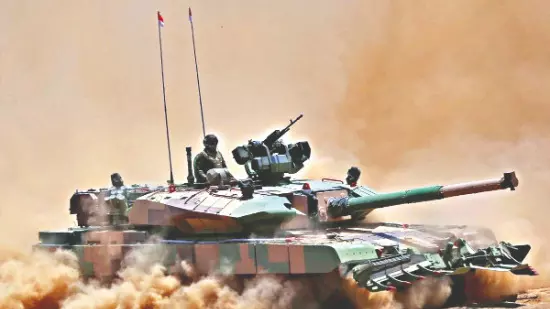India’s defence exports surge to record Rs 23,622 crore in 2024-25

New Delhi: India’s defence exports soared to a record Rs 23,622 crore ($2.76 billion) in the financial year 2024-25, marking a 12.04 per cent surge from the previous year’s Rs 21,083 crore, the Ministry of Defence announced on Tuesday. This milestone underscores the country’s accelerating transition from a defence importer to a global exporter, driven by policy reforms, private sector dynamism, and geopolitical demand.
Public and Private Sector Synergy
Defence Public Sector Undertakings (DPSUs) spearheaded the growth with exports skyrocketing 42.85 per cent to Rs 8,389 crore, up from Rs 5,874 crore in FY 2023-24. The private sector retained its dominant role, contributing Rs 15,233 crore (64.5 per cent of total exports), marginally higher than Rs 15,209 crore last year. Defence Minister Rajnath Singh hailed the achievement as a testament to India’s “Aatmanirbhar Bharat” vision, crediting Prime Minister Narendra Modi’s leadership for steering the sector toward the Rs 50,000 crore export target by 2029.
Policy Reforms and Global Outreach
The government attributed the success to sweeping policy changes, including simplified industrial licensing, removal of components from licensing requirements, and extended license validity periods. Streamlined export authorizations under a revised Standard Operating Procedure (SOP) led to a 16.92 per cent rise in permits issued (1,762 in FY 2024-25 vs. 1,507 previously), while the number of exporters grew by 17.4 per cent.
India now supplies ammunition, arms, subsystems, and advanced platforms like the BrahMos supersonic missiles and HAL Dhruv helicopters to nearly 80 countries. Strategic partnerships with the US, which accounts for 50 per cent of export volume, and collaborations with firms like Boeing and Lockheed Martin have bolstered this expansion. Geopolitical tensions, including the Russia-Ukraine war and Israel-Hamas conflict, have further amplified global demand for cost-effective Indian defence solutions.
Indigenization and Innovation
Investments in indigenous R&D, such as the Advanced Towed Artillery Gun System (ATAGS) and over 14,000 indigenized items under the SRIJAN initiative, have reduced import dependency. Defence production has grown 174 per cent since 2014-15, reflecting a robust industrial ecosystem. Diplomatic outreach to Africa, Southeast Asia, and the Indo-Pacific, backed by credit lines, has expanded India’s market footprint.
Challenges and the Road Ahead
While the surge strengthens India’s strategic autonomy and economic resilience, generating foreign exchange and high-skilled jobs, experts caution against risks. Exports to conflict zones raise proliferation concerns, and deals with authoritarian regimes could conflict with human rights commitments. Overemphasis on defence might divert resources from civilian sectors, while neighbours like China and Pakistan may perceive India’s rise as a threat, potentially triggering regional arms races.
Defence Minister Singh emphasized sustainable growth through “ethical trade practices and stringent export controls.” As India eyes the 2029 target, balancing industrial ambition with global responsibility remains critical to cementing its role as a trusted defence partner.



